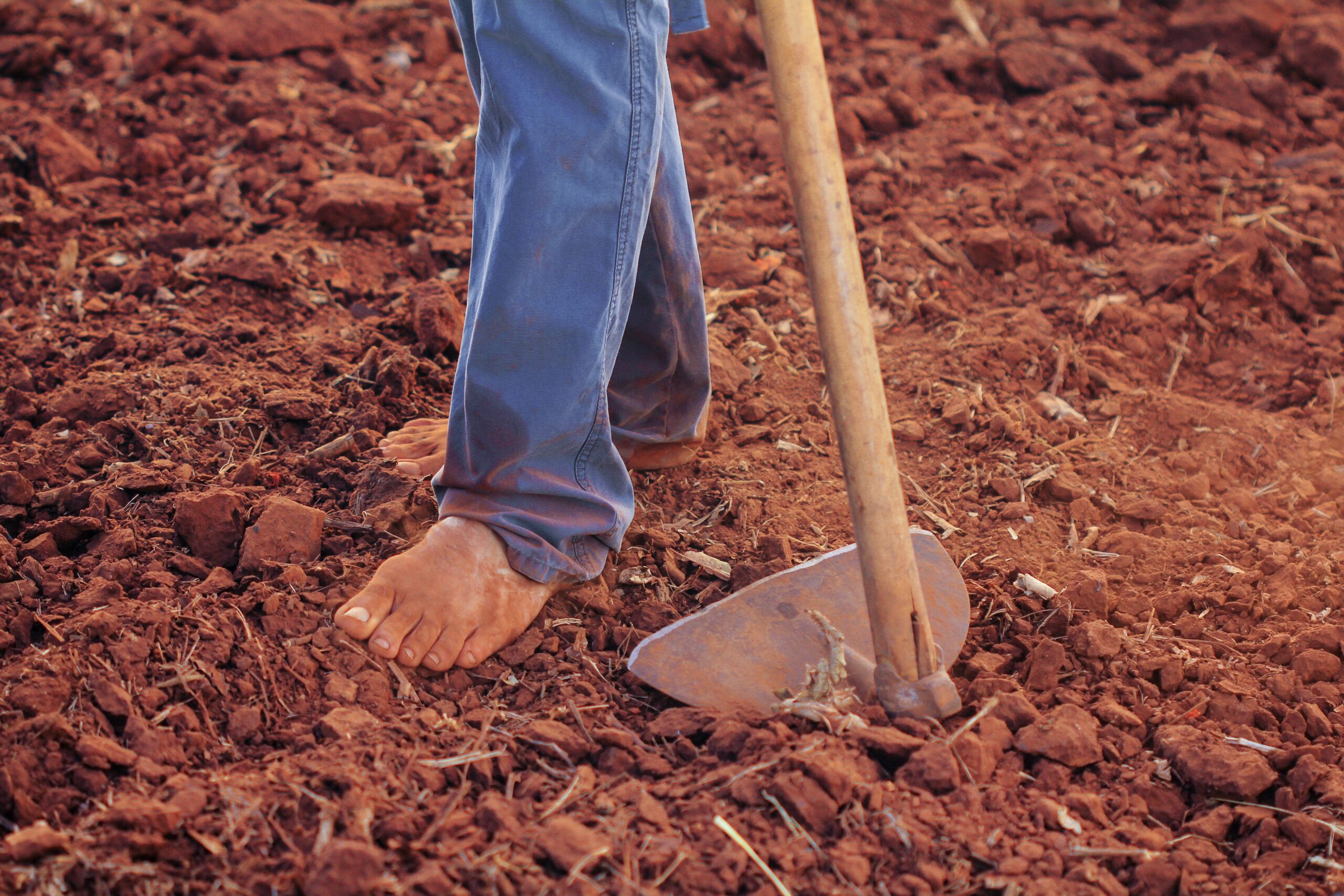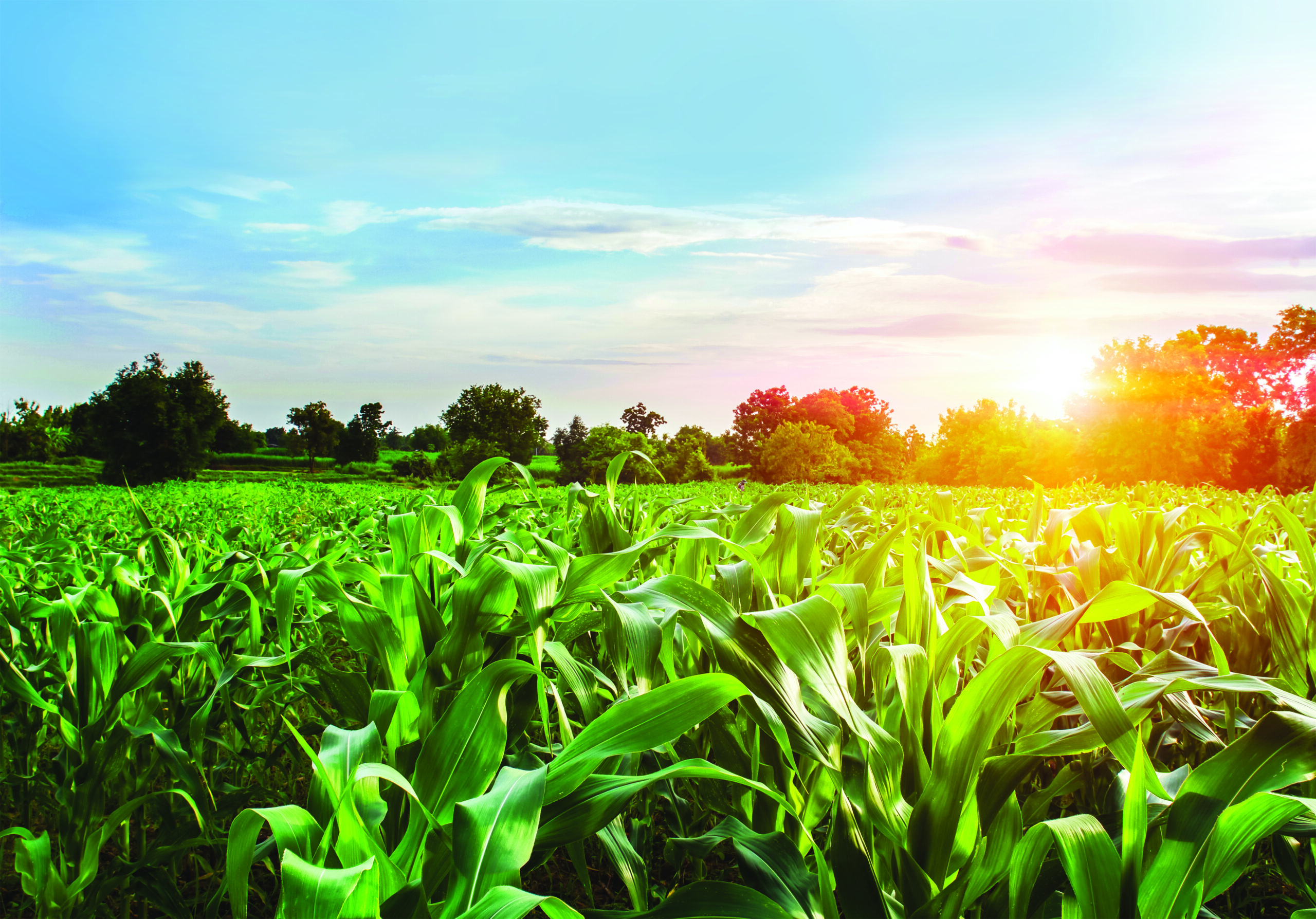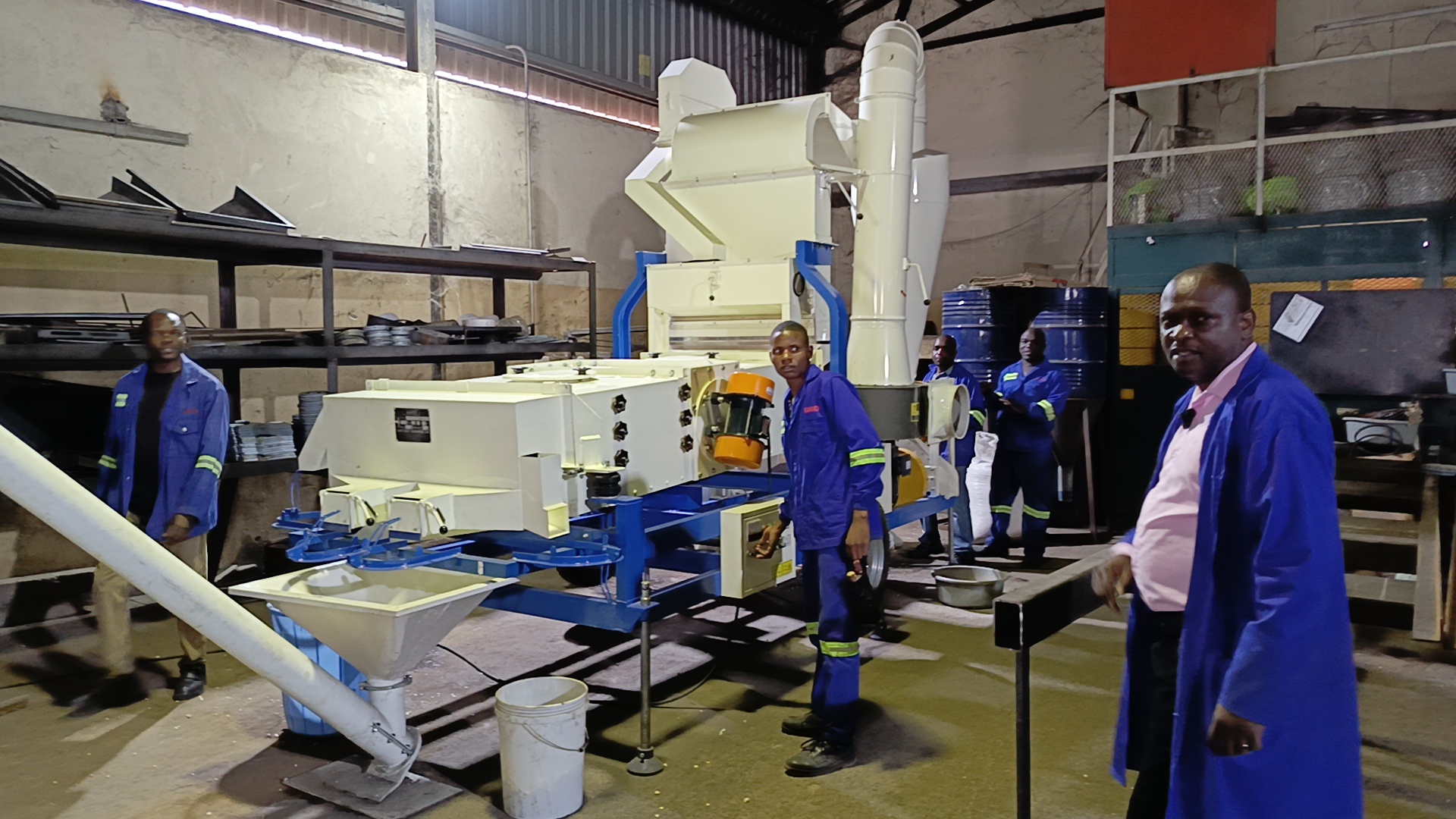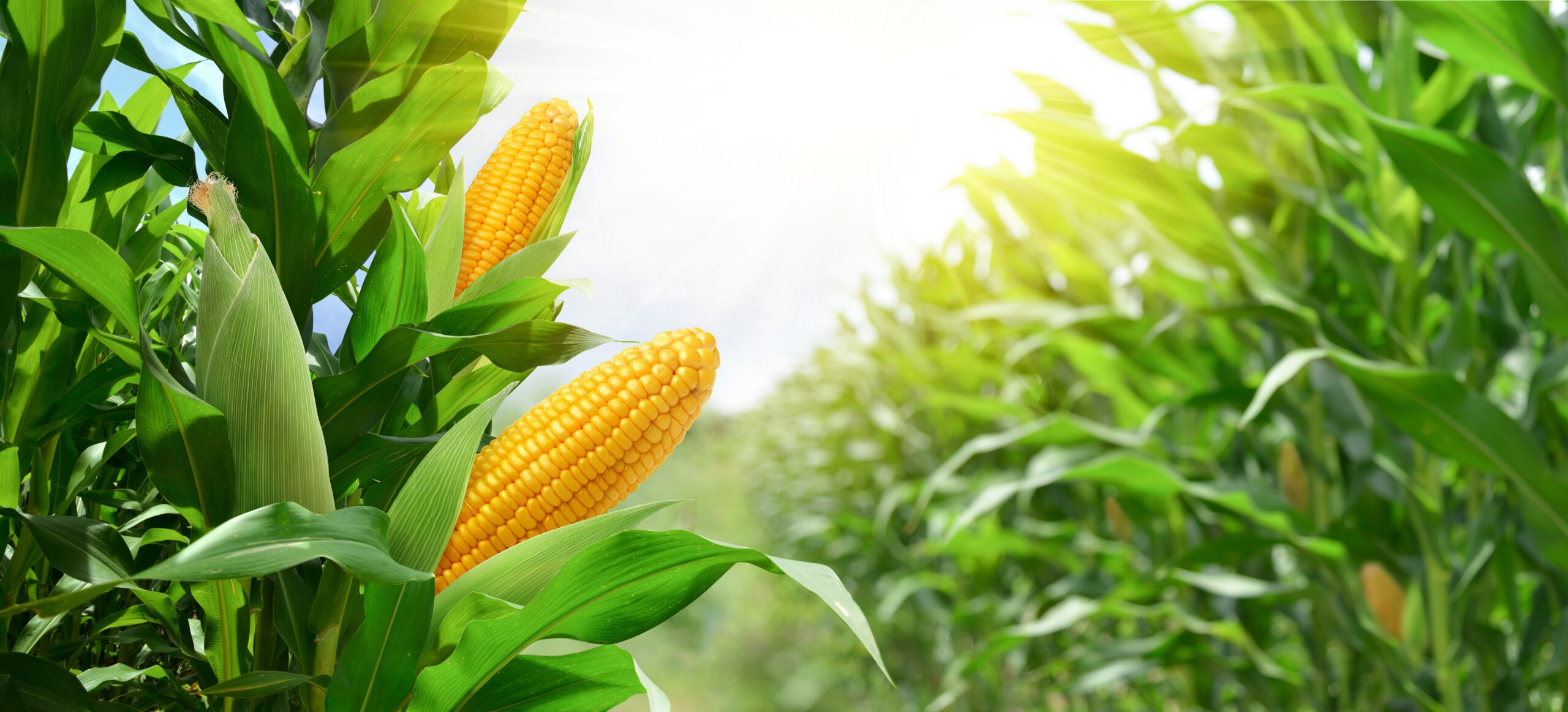Soil is the most fundamental resource for the farmer, without which food and natural fibre cannot be produced. Furthermore, it is often also the most expensive single capital asset of the farmer. Soil is also a scarce resource, the availability of which on earth is limited. In order to be able to utilise any resource productively, it is necessary that the soil user has a working knowledge of that resource. This series aims at providing the soil user with a basic knowledge of the soil as a resource. This introductory article focuses on the composition of soil.
What is soil?
Generally, soil is regarded by the agriculturalist as the unconsolidated material which forms the uppermost layer of the hard earth crust and which maintains plant growth. This layer of soil varies in depth, from insignificant where solid rock occurs at the earth’s surface, to several metres deep.
What does soil comprise?
The main components of soil are the minerals, air, water and organic fractions. These four components are integrated and occur in different ratios in the soil. The composition of each of the components varies from place to place. The variation in the ratio between the components and the variation of the components themselves, largely influence the properties of the soil and therefore also the ability of the soil to sustain plant growth and thus eventually the productivity of the soil.
The mineral fraction
The mineral fraction comprises about 50% of the soil volume and is made up of rocks that have been weathered down to fine fragments by a variety of processes. Various rocks have various mineralogical compositions and therefore weather into different soil types. Because geological matter varies from place to place, one can therefore expect that soils formed in situ (in the same place) from the parent material, will bear a strong resemblance to the parent material. Therefore, soils formed from shale are clayey, while soils formed from sandstone are sandy. Not all soils have been formed in situ from the original parent material, but could also be formed from parent material transported from another place by wind, water, glaciers or gravity (down slopes). Examples of transported soils are the wind-blown (Aeolian) sands from the Kalahari and the soils on the flood plains of rivers (alluvial soils). Various new minerals can crystallise in the soil during the weathering of the parent material. The most important amongst these are clays or other secondary minerals.
Particle size distribution
The mineral fraction can comprise particles of various sizes. Particles larger than 2 mm in diameter are classified as gravel or rock fragments and are not regarded as soil. It is therefore the fraction that can pass through a 2 mm sieve, which is regarded as soil. Sand varies in size from 2 mm to 0,05 mm and that of silt between 0,05 mm and 0,002 mm. The fraction smaller than 0,002 mm is regarded as clay.
The sand fraction
The sand fraction usually consists of hard minerals that originally came from larger crystals which were part of the parent material and physically weathered (broken off), splintered, crumbled and were reduced in size. Of these, quartz is the most common example, due to the hardness thereof. Another hard material that chemically weathers and often forms part of the sand fraction, is feldspar, which is plentiful in granite. Soft minerals and those that are chemically reactive, weather away quickly and therefore do not usually form part of the sand fraction.
The silt fraction
The silt fraction is usually mineralogically the same as that of the sand fraction and therefore consists of sand which has simply weathered further physically to particles smaller than 0,05 mm in diameter.
The clay fraction
The mineralogical composition of the clay fraction can be widely divergent, as it can crystallise in situ, or it can be transported. Because clay particles are so small, they have special characteristics and they contribute the most towards the physical and chemical properties of the soil. Articles following in this series will focus specifically on the clay fraction.
The pore volume
The pore volume comprises the openings between the solid particles and makes up about 50% of the soil volume. This fraction is also known as the porosity of the soil. The pores are filled with air and/or water. As can be expected, some of these pores are larger and others smaller. The size of the pores has a major influence on a number of the physical properties of the soil. For example, sandy soil usually has a low pore volume, but with larger individual pores than in clay soil. The taller usually has a larger pore volume, with smaller individual pores. When a drained loam soil is at field water capacity, the pores are about half filled with water and half with air. Clayey soils hold more water than sandy soils at field water capacity. Deeper soil layers are often more compact and therefore have a lower porosity. Frequently more than half of this pore volume is filled with water and these layers are regarded as “waterlogged”.
The organic fraction
The organic material content of the vast majority of soils in Southern Africa is less than 5%, with the majority of arable soils less than 1%. The organic material in soil consists of dead plant material, soil microbes, remains of animal origin, and excretions of animals. The organic material is broken down (humified) in the soil to simple organic compounds which, in turn, are restructured into humus. This humus is reasonably resistant to degradation and gives the upper layer of soil its darker colour.
Summary
Soil is a very complex composition of mineral particles, air, water and organic material. This composition has a major influence on plant growth and therefore the study field of Soil Science is essential for sustainable production of food and fibre. Follow-up articles will examine in greater depth the various soil properties. The next article will carry more information on the influence of the various rock formations on soil properties.
REFERENCES
The following references were used extensively during the compilation of this series of articles:
- Brady, N.C. and Weil, R.R. (1996) The nature and properties of soils. Prentice Hall, New Jersey.
- Foth, H.D. (1990) Fundamentals of soil science. John Wiley & Sons, New York.
- Le Roux, P.A.L., Ellis, F., Merryweather, F.R., Schoeman,J.L., Snyman, K. van Deventer, P.W. and Verster, E., (1999) Guidelines for the mapping and interpretation of the soils of South Africa.
- Singer, M.J. and Munns, D.N. (1987) Soils an introduction. Macmillian Publishing Company, New York.
- Soil Classification Working Group, (1991) Soil Classifi cation – A tacsonomic system for South-Africa. Mem.
agric. nat. resour. S. Afr. No. 15. IGKW, Pretoria. - Sopher, C.D. and Baird, J.V. (1978) Soils and soil management. Reston Publishing Company Inc., Reston.
- Van Huyssteen, C.W. (2009) Soilecology. Unpublished class notes for GKD214. University of the Free State, Bloemfontein. White, R.E. (1979) Introduction to the principles and practice of soil science. Blackwell Scientific Publications, Oxford.
- Winegardner, D.L. (1996) An introduction to soils for environmental professionals. Lewis publishers, New York.
For further information, please contact: Martiens du Plessis: martiens@nwk.co.za
Cornie van Huyssteen: vanhuysteencw@ufs.ac.za
ProagriMedia acknowledges Grain SA for the use of this series which originally appeared in Afrikaans in SA Graan/Grain.









